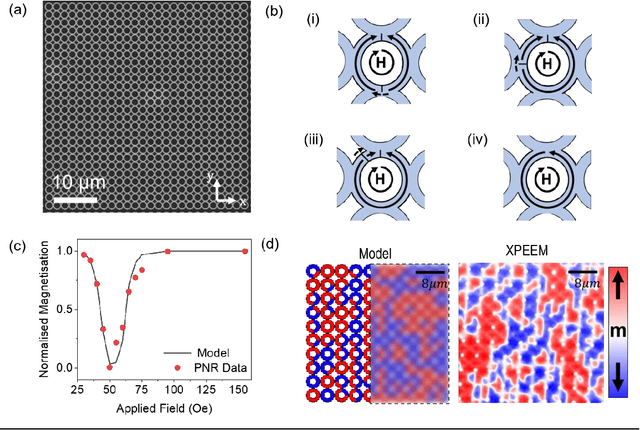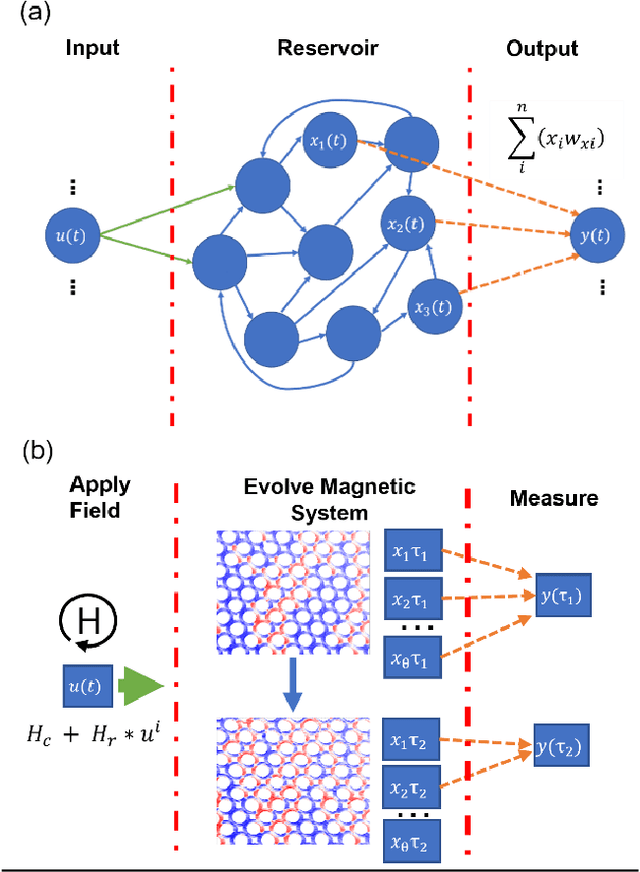Quantifying the Computational Capability of a Nanomagnetic Reservoir Computing Platform with Emergent Magnetization Dynamics
Paper and Code
Nov 29, 2021



Arrays of interconnected magnetic nano-rings with emergent magnetization dynamics have recently been proposed for use in reservoir computing applications, but for them to be computationally useful it must be possible to optimise their dynamical responses. Here, we use a phenomenological model to demonstrate that such reservoirs can be optimised for classification tasks by tuning hyperparameters that control the scaling and input-rate of data into the system using rotating magnetic fields. We use task-independent metrics to assess the rings' computational capabilities at each set of these hyperparameters and show how these metrics correlate directly to performance in spoken and written digit recognition tasks. We then show that these metrics can be further improved by expanding the reservoir's output to include multiple, concurrent measures of the ring arrays' magnetic states.
 Add to Chrome
Add to Chrome Add to Firefox
Add to Firefox Add to Edge
Add to Edge